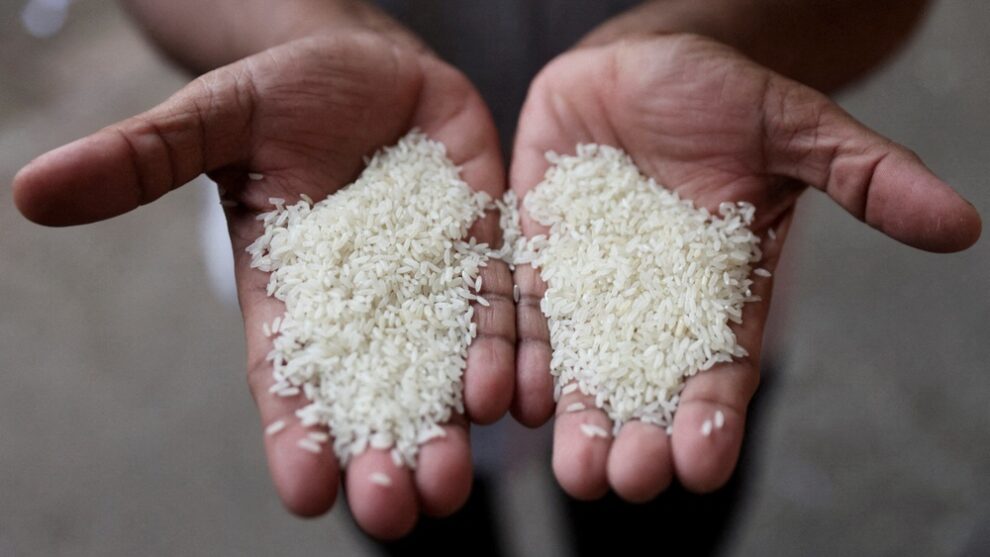Prices of rice, a major staple for Asia, have soared over the past months due to floods, heat waves and other extreme weather conditions affecting the rice production, adding to the food inflation that has already hit households and businesses in the region. The world’s top rice exporter, India’s decision to ban exports of non-basmati white rice starting in July has also shocked the market.
How have rising rice prices affected the region? Here is a selection of stories on the latest developments.

Rising prices for imported rice in Malaysia have consumers flocking to cheaper locally grown products, squeezing the budgets of households that find it difficult to afford higher food prices. With local rice able to meet only 70% of domestic demand, the Malaysian government has begun implementing programs to increase local production. Read more.
Indian women plant rice in Midnapur, 150 kilometers west of Kolkata in eastern India. © Reuters
The international rice market is classified as a “thin” market. The volume of exported rice represents only 11% of global production compared with the figure for wheat at 27%. Even India’s rice exports comprise just 17% of its total production. The rice supply is harder to replace. If El Nino affects more rice production, it may trigger another round of worries about a global food shortage. Read more.
Food stores in Manila have been losing money, with prices increasing rapidly since Sept. 1. © AP
In early October, the Philippine government lifted the ceiling on rice prices, roughly a month after implementing limits to contain surging prices of the key food item. President Ferdinand Marcos Jr. said, “We are taking other measures to help our farmers in terms of their equipment, their processing.”.
Thai farmers harvest rice. Yields are projected to drop due to drought. © Reuters
Rainfall has been weak across Thailand due to the effects of the El Nino phenomenon. With worries that extended drought will compromise agriculture, the country has launched rainmaking operations and taken other drought-fighting steps as it deals with a severe water shortage. It estimates that rice production will decline to 25.8 million tonnes for 2023-2024, down more than 3% from last season.
Source : Nikkei Asia















